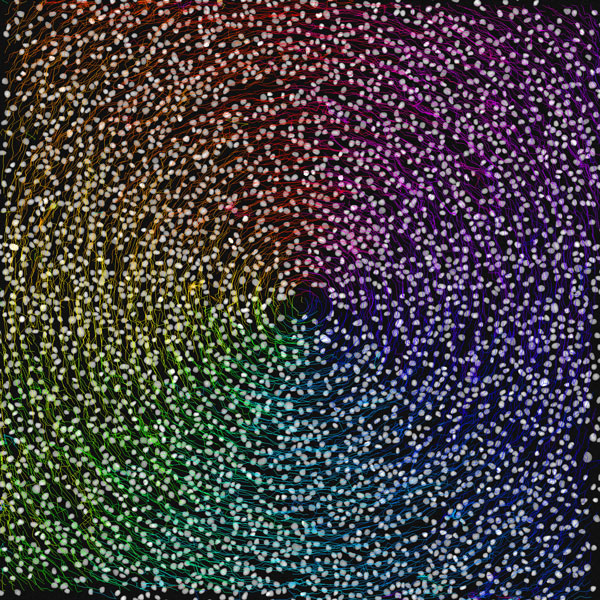As advances in microscopes continue to be made, researchers are gaining the ability to acquire sequences of images that capture the dynamic processes in biological systems. Accurately quantifying the motion in these images is crucial if we are to make valid conclusions about the dynamics of these systems. Biologists have traditionally turned to particle image velocimetry to estimate the underlying velocity field. However, optical flow algorithms have been shown to outperform particle image velocimetry in numerous applications such as the measurement of fluid flows.

Figure: Visualization of the velocity field using the FlowPath routine of OpFlowLab. The velocity field was a synthetic vortex motion of 15 pixels/frame around the center of the image.
Here, we compared the accuracy of velocity fields estimated from biological images using either optical flow algorithms or particle image velocimetry. These comparisons were performed on both synthetic images that resemble the movement of nuclei in the monolayer as well as actual experimental images. Over the range of velocity types and speeds tested, we showed that optical flow algorithms provided a more accurate estimation of the underlying velocity field. To further refine the velocity field obtained from biological images, such as fluorescent nuclei images, we also developed a simple object matching routine. This helped to improve the accuracy of the estimated velocity fields, especially when the velocities involved were large.
Being able to validate the velocity field, especially when the underlying velocities are not known, is critical in ensuring that any conclusions made based on it are accurate. Thus, we have developed tools that allow for the visual validation of a velocity field. We also provided several algorithms to visualize the velocity field in an intuitive manner. These tools, along with the optical flow algorithms and object matching algorithm, have been packaged into our integrated platform, OpFlowLab, which aims to facilitate the use of these methods in a user-friendly manner.
This platform has been useful for our HFSP project as we were able to elucidate the movement of cells grown on our 3D substrates after a separate post processing step was performed to unwrap the structures onto a 2D surface. Likewise, we believe that this platform can assist the wider biological community to explore the dynamics of biological systems in a more detailed and accurate manner.


































